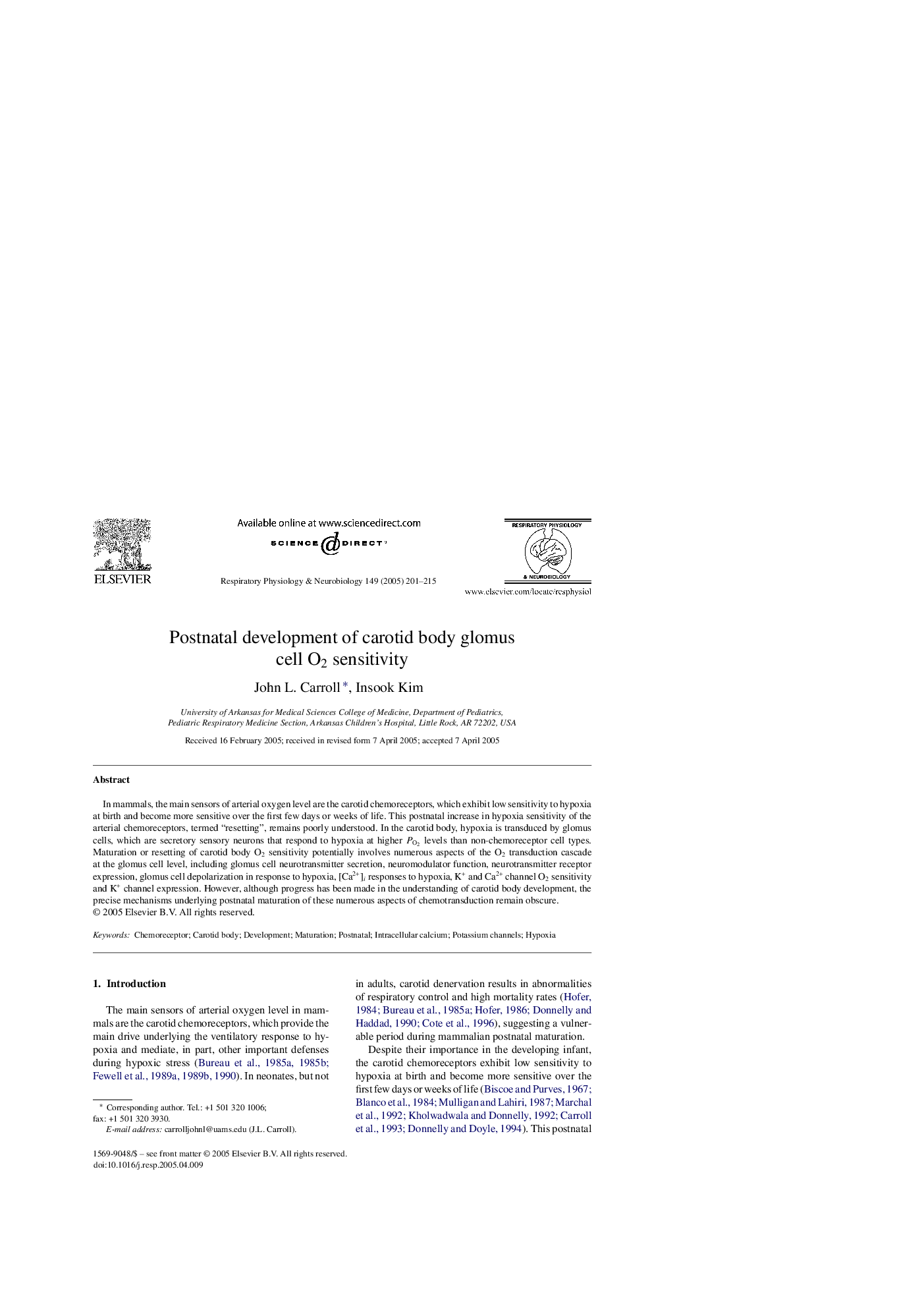| Article ID | Journal | Published Year | Pages | File Type |
|---|---|---|---|---|
| 9152193 | Respiratory Physiology & Neurobiology | 2005 | 15 Pages |
Abstract
In mammals, the main sensors of arterial oxygen level are the carotid chemoreceptors, which exhibit low sensitivity to hypoxia at birth and become more sensitive over the first few days or weeks of life. This postnatal increase in hypoxia sensitivity of the arterial chemoreceptors, termed “resetting”, remains poorly understood. In the carotid body, hypoxia is transduced by glomus cells, which are secretory sensory neurons that respond to hypoxia at higher PO2 levels than non-chemoreceptor cell types. Maturation or resetting of carotid body O2 sensitivity potentially involves numerous aspects of the O2 transduction cascade at the glomus cell level, including glomus cell neurotransmitter secretion, neuromodulator function, neurotransmitter receptor expression, glomus cell depolarization in response to hypoxia, [Ca2+]i responses to hypoxia, K+ and Ca2+ channel O2 sensitivity and K+ channel expression. However, although progress has been made in the understanding of carotid body development, the precise mechanisms underlying postnatal maturation of these numerous aspects of chemotransduction remain obscure.
Keywords
Related Topics
Life Sciences
Biochemistry, Genetics and Molecular Biology
Physiology
Authors
John L. Carroll, Insook Kim,
